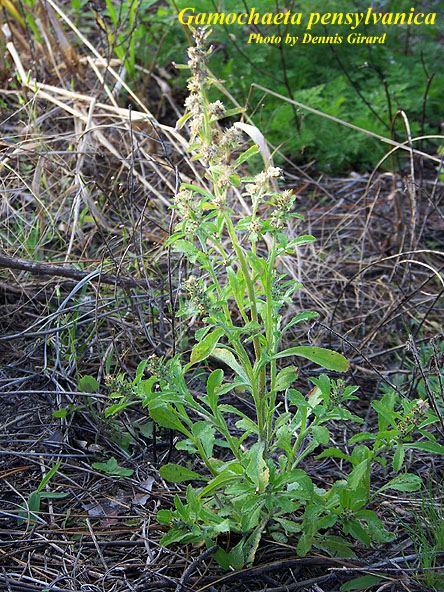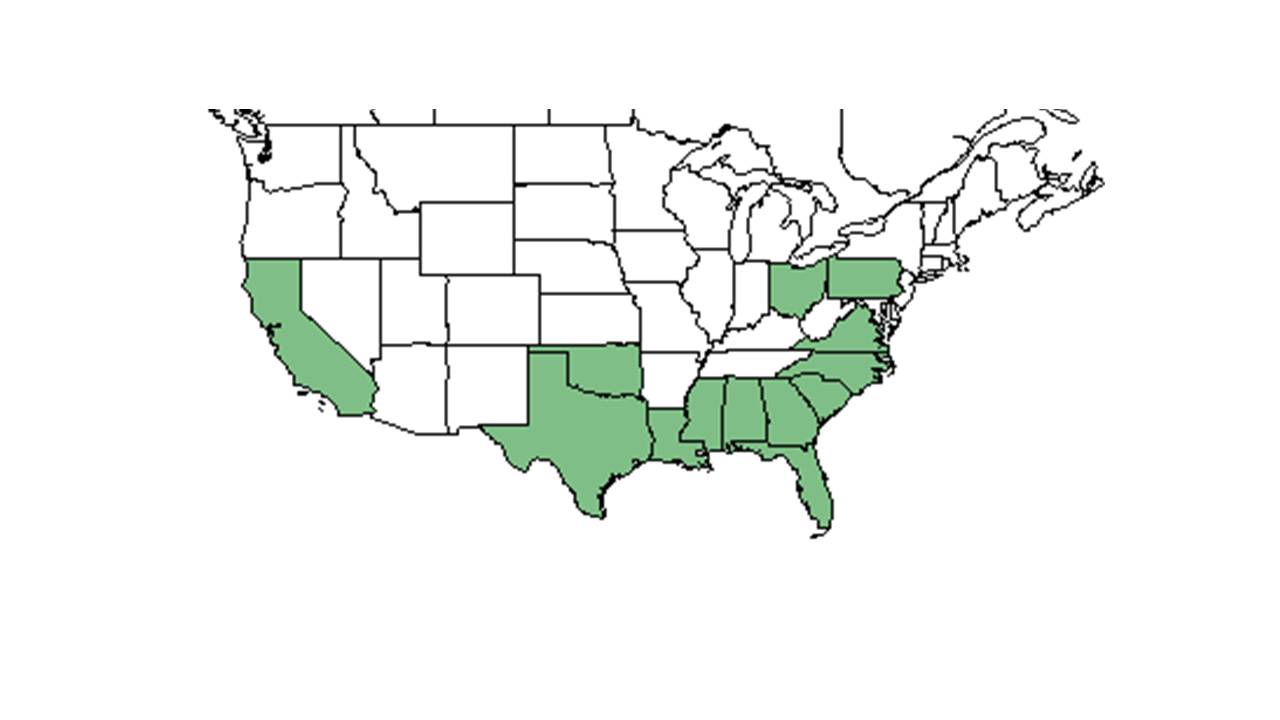Difference between revisions of "Gamochaeta pensylvanica"
| Line 4: | Line 4: | ||
| name = Gamochaeta pensylvanica | | name = Gamochaeta pensylvanica | ||
| image = Gamo_pens.jpg | | image = Gamo_pens.jpg | ||
| − | | image_caption = Photo by Dennis Girard, [http://www.florida.plantatlas.usf.edu/ Atlas of Florida Vascular Plants] | + | | image_caption = Photo by Dennis Girard, [http://www.florida.plantatlas.usf.edu/Default.aspx Atlas of Florida Vascular Plants] |
| regnum = Plantae | | regnum = Plantae | ||
| divisio = Magnoliophyta - Flowering plants | | divisio = Magnoliophyta - Flowering plants | ||
Revision as of 18:51, 10 February 2016
| Gamochaeta pensylvanica | |
|---|---|

| |
| Photo by Dennis Girard, Atlas of Florida Vascular Plants | |
| Scientific classification | |
| Kingdom: | Plantae |
| Division: | Magnoliophyta - Flowering plants |
| Class: | Magnoliopsida – Dicotyledons |
| Order: | Asterales |
| Family: | Asteraceae ⁄ Compositae |
| Genus: | Gamochaeta |
| Species: | G. pensylvanica |
| Binomial name | |
| Gamochaeta pensylvanica (Willd.) Cabrera | |

| |
| Natural range of Gamochaeta pensylvanica from USDA NRCS Plants Database. | |
Common name: Pennsylvania everlasting
Contents
Taxonomic notes
Description
A description of Gamochaeta pensylvanica is provided in The Flora of North America.
Distribution
Ecology
Habitat
G. pensylvanica has been found in sandy loam of floodplain forests; scrubby growth of old burn in coastal hammocks; marsh edges; lake shores; fallow fields; dried up lake bottoms; cabbage palm hammocks; limestone glades; and pinewoods. It can be found in human disturbed areas such as roadsides, citrus groves, vacant lots, pastures, lawns, and fire breaks (FSU Herbarium). Soil types include sandy loam, loamy sand, gray-black sand, and peaty soils (FSU Herbarium). Associated species include Acer, Celtis, Morus, Platanus, Populus, Quercus, Ulmus, Gamochaeta antillana, Hypochaeris glabra, Carex, Panicum commutatum, Stachys floridana and Gamochaeta coarctata (FSU Herbarium).
Phenology
Flowers have been observed February through April and November (FSU Herbarium).
Seed dispersal
Seed bank and germination
Fire ecology
Pollination
Use by animals
Diseases and parasites
Conservation and Management
Cultivation and restoration
Photo Gallery
References and notes
Florida State University Robert K. Godfrey Herbarium database. URL: http://herbarium.bio.fsu.edu. Last accessed: Collectors: States and Counties: Compiled by Tall Timbers Research Station and Land Conservancy. Florida State University Robert K. Godfrey Herbarium database. URL: http://herbarium.bio.fsu.edu. Last accessed: October 2015. Collectors: Loran C. Anderson, Wilson Baker, C.W. Campbell, Andre F. Clewell, H.S. Conrad, George R. Cooley, Richard J. Eaton, A. Gholson Jr., R.K. Godfrey, Ann F. Johnson, R. Komarek, Meredith Jones, R. Kral, Richard S. Mitchell, Joseph Monachino, R.A. Norris, John Popenoe, Grady W. Reinert, Paul O. Schallert, Lloyd H. Shinners, Cecil R. Slaughter, L.B. Trott, Jean Wooten. States and Counties: Florida: Baker, Bay, Calhoun, Dade, Dixie, Escambia, Franklin, Gadsden, Gilchrist, Hernando, Jackson, Leon, Liberty, Marion, Orange, Pinellas, Polk, Putnam, Seminole, St. Johns, Wakulla. Georgia: Grady. Country: Costa Rica. Compiled by Tall Timbers Research Station and Land Conservancy.